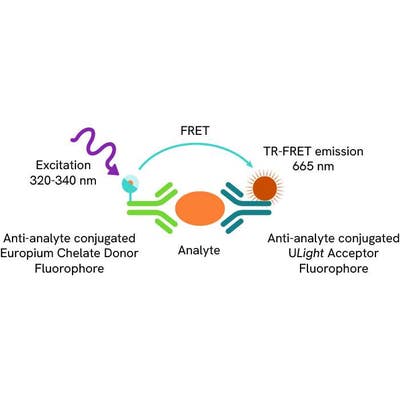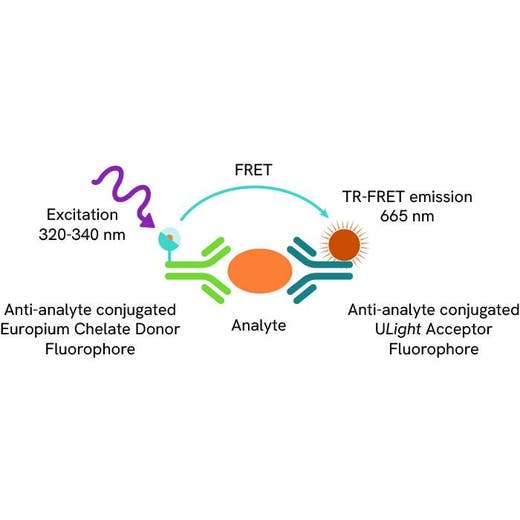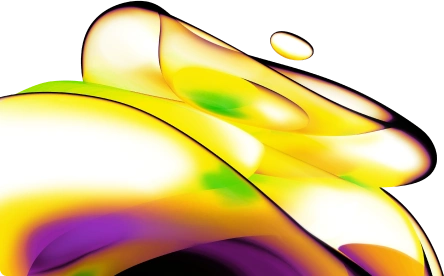
LANCE Ultra Human PCSK9 Detection Kit, 500 Assay Points



| Feature | Specification |
|---|---|
| Application | Protein Quantification |
| Dynamic Range | 42.6 - 100,000 pg/mL |
| Limit of Detection | 42.6 pg/mL |
| Limit of Quantification | 223.2 pg/mL |
| Sample Volume | 15 µL |



Loading...
Product information
Overview
The LANCE Ultra Human PCSK9 Detection Kit is designed for detection and quantitation of human PCSK9 in cell culture media using a homogeneous TR-FRET (no-wash steps, no separation steps) assay.
- No-wash steps, no separation steps
- TR-FRET technology
- Sensitive detection
- High reproducibility
- Faster time-to-results
- Easy automation
- 96-well, 384-well, and 1536-well formats
LANCE and LANCE (Lanthanide chelate excite) Ultra are our TR-FRET (time-resolved fluorescence resonance energy transfer), homogeneous (no wash) technologies. One antibody of interest is labeled with a donor fluorophore (a LANCE Europium chelate) and the second molecule is labeled with an acceptor fluorophore (ULight™ dye). Upon excitation at 320 or 340 nm, energy can be transferred from the donor Europium chelate to the acceptor fluorophore if sufficiently close for FRET (~10 nm). This results in the emission of light at 665 nm.
Human Proprotein Convertase Subtilisin / Kexin Type 9 (PCSK9) belongs to the proteinase K subfamily of the secretory subtilase family. This glycoprotein contains 692 amino acids, including a signal peptide, a prodomain, and a catalytic domain. Initially synthesized as a soluble 74 kDa precursor protein, it is cleaved into 14 kDa and 60 kDa domains, which remain associated. This protein plays a major regulatory role in cholesterol homeostasis and is highly expressed in the kidney, liver, and intestine. PCSK9 binds to the low-density lipoprotein receptor (LDLR), inducing LDLR degradation. Reduced LDLR levels result in decreased metabolism of low-density lipoprotein, which could lead to hypercholesterolemia. Inhibition of PCSK9 function is currently being explored as a means of lowering cholesterol levels. Mutations in this gene have been associated with a rare form of autosomal dominant familial hypercholesterolemia.
Specifications
| Application |
Protein Quantification
|
|---|---|
| Brand |
LANCE Ultra
|
| Detection Modality |
LANCE
|
| Dynamic Range |
42.6 - 100,000 pg/mL
|
| Limit of Detection |
42.6 pg/mL
|
| Limit of Quantification |
223.2 pg/mL
|
| Product Group |
Kit
|
| Sample Volume |
15 µL
|
| Shipping Conditions |
Shipped in Blue Ice
|
| Target |
PCSK9
|
| Target Class |
Biomarkers
|
| Target Species |
Human
|
| Technology |
TR-FRET
|
| Therapeutic Area |
Metabolic
|
| Unit Size |
500 assay points
|
Resources
Are you looking for resources, click on the resource type to explore further.
LANCE™ Ultra TR-FRET is a no-wash proximity assay technology that combines the benefits of time resolution (TR) with fluorescence...


How can we help you?
We are here to answer your questions.






























